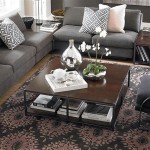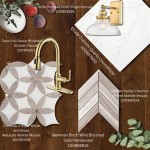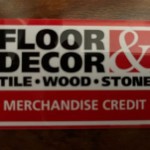Decorative Metal Handrails for Stairs
Stair handrails serve a critical safety function, providing stability and support for ascending and descending staircases. Beyond their practical purpose, handrails also contribute significantly to a space's aesthetic appeal. Decorative metal handrails, in particular, offer a versatile design element capable of enhancing various architectural styles, from traditional to contemporary.
Material Selection and Durability
The choice of metal for a decorative handrail impacts both its visual appeal and its long-term durability. Wrought iron, with its classic elegance and ornate detailing, remains a popular option for traditional or rustic settings. Stainless steel provides a sleek, modern aesthetic and exceptional resistance to corrosion, making it suitable for both indoor and outdoor applications. Aluminum offers a lightweight yet sturdy option, often favored for its affordability and low maintenance requirements. Brass, with its warm, golden tones, lends a touch of luxury and can be polished to a high sheen. The selection process should consider the overall design scheme, environmental conditions, and desired level of maintenance.
Durability is a crucial consideration, especially for exterior handrails exposed to the elements. Protective coatings, such as powder coating or galvanization, can significantly enhance the metal's resistance to rust and corrosion, extending the lifespan of the handrail. Proper installation techniques also play a vital role in ensuring long-term stability and structural integrity. Regular cleaning and maintenance, including periodic inspections for damage, are essential for preserving the handrail's appearance and functionality.
Design Styles and Customization
Decorative metal handrails offer a vast range of design possibilities, allowing for customization to suit individual preferences and architectural styles. Intricate scrollwork, geometric patterns, and nature-inspired motifs can be incorporated to create visually stunning handrails that serve as focal points. For minimalist or contemporary settings, sleek, unadorned handrails in brushed or polished finishes provide a clean, modern look. The handrail's profile, including the shape of the handgrip and the design of the balusters or supporting posts, can be tailored to complement the overall aesthetic.
Customization options extend beyond the basic design elements. Powder coating allows for a wide selection of colors, enabling homeowners to match the handrail to existing décor or create contrasting accents. Patinas and other finishing techniques can be applied to achieve specific aesthetic effects, such as an aged or weathered look. Integrating decorative elements like glass panels, wood accents, or artistic metalwork further enhances the handrail's visual appeal and creates a truly unique design statement.
Building Codes and Safety Regulations
While aesthetics are important, safety remains the primary function of a stair handrail. Adherence to local building codes and safety regulations is paramount during the design and installation process. These regulations typically specify minimum handrail heights, clearances, and load-bearing capacities to ensure user safety. Handrails should be securely anchored to the wall or staircase structure to prevent movement or instability. The handgrip should provide a comfortable and secure grip, and the spacing between balusters should be narrow enough to prevent children from passing through.
Consulting with a qualified professional, such as a contractor or architect, is essential to ensure compliance with all applicable regulations. Professional installation not only guarantees safety but also contributes to the handrail's longevity and performance. A thorough inspection of the completed installation should be conducted to verify that all safety requirements have been met and that the handrail is properly secured and functioning as intended. Regular maintenance and inspections should be performed to address any potential safety concerns and ensure the handrail's continued compliance with regulations.
Selecting and installing decorative metal handrails involves careful consideration of material, design, and safety regulations. By understanding these key aspects, homeowners can enhance the beauty and functionality of their staircases while ensuring the safety and well-being of all users.
From the intricate details of wrought iron to the sleek lines of stainless steel, decorative metal handrails offer a versatile range of design options to complement any architectural style. By carefully considering the material, design, and safety aspects, homeowners can enhance the aesthetic appeal and functionality of their staircases, creating a safe and visually stunning focal point.

Ornamental Wrought Iron Staircase Railing Orange County Ca Angels Gallery

Interior Railings Wrought Iron Custom Metal Creative Forge

Romantic Wrought Iron Stair Rail Great Lakes Metal Fabrication

Interior Railings Wrought Iron Custom Metal Creative Forge

Metal Handrails Stair Railing Kp Engineering

Decorative Railing In A Connecticut Home D J Imports Ltd

Interior Railings Wrought Iron Custom Metal Creative Forge

Wrought Iron Arch Railing For Stairs Great Lakes Metal Fabrication

Indoor Stainless Steel Stair Railing Metal Handrails Tbk Best Top 10 Manufacturers

Decorative Wrought Iron Barades Gallery Landing Interior Metal Stair Railing Whole On Discount Iok 164








